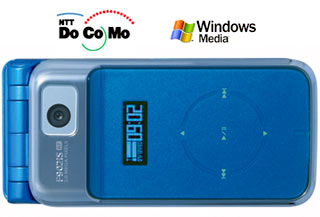NTT DoCoMo finally needs Microsoft
One of WWJ’s long-time favorite mobile & tech media sites, The Register.co.uk, posted an item last week that stopped us short: “DoCoMo deal opens i-Mode world to Windows Media.”
The point that caught us was right in the opening graf (see if it grabs you too):
“Japanese giant NTT DoCoMo, a long standing Microsoft partner in the world of mobile entertainment, is to port Windows Media DRM (digital rights management) to its 3G handsets, allowing for content to be moved between phones and PCs, and bypassing the Open Mobile Alliance DRM.”
Like us, you probably didn’t need the red ink to highlight this article’s boggling assertion that NTT DoCoMo is a “long standing” Microsoft partner; while the two tech giants may not exactly hate each other, there’s been been little love lost as Microsoft has failed at every step of i-mode’s growth to establish any significant…


 In a rare quadruple play, DoCoMo today issued three new handset announcements plus one new technology tie-up press release. The first handset news includes the long-expected new credit-card-enabled phones that will come bundled with the carrier’s ‘DCMX’ Java-and-IC-chip-based credit card. The new
In a rare quadruple play, DoCoMo today issued three new handset announcements plus one new technology tie-up press release. The first handset news includes the long-expected new credit-card-enabled phones that will come bundled with the carrier’s ‘DCMX’ Java-and-IC-chip-based credit card. The new  This week marked a major milestone for WWJ! In one form or another, I’ve been writing this email newsletter for five years — and what a five year term it’s been!
This week marked a major milestone for WWJ! In one form or another, I’ve been writing this email newsletter for five years — and what a five year term it’s been!